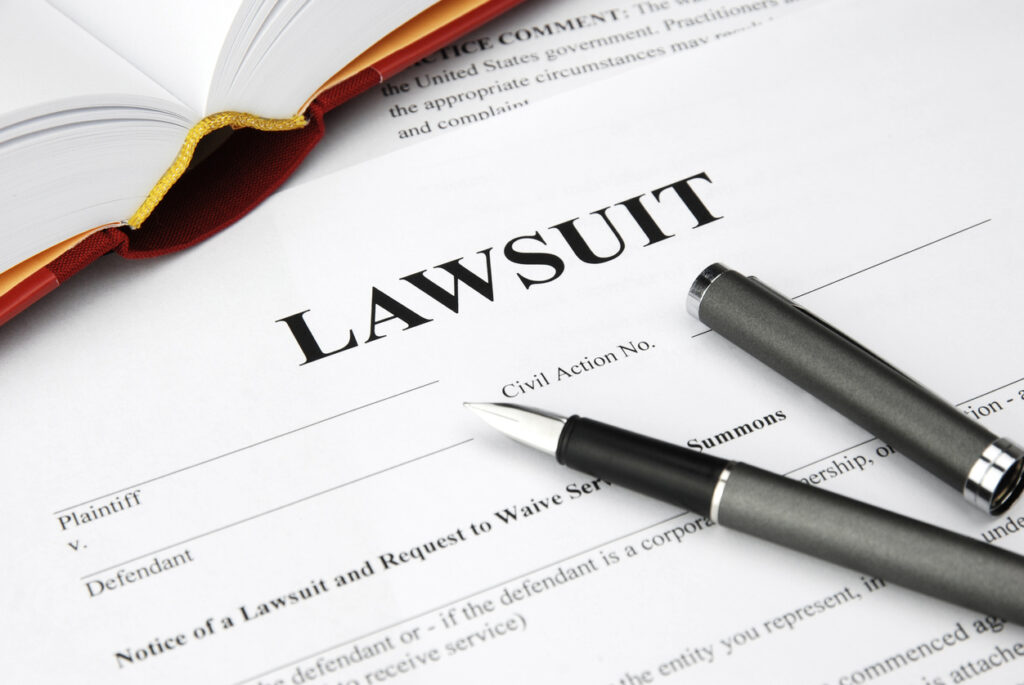Attorneys of Chicago | December 17, 2024 | Chicago Personal Injury Blog

Class action lawsuits were first legalized under Illinois state law in 1933, marking a pivotal innovation in the legal system. Their brilliance lies in their ability to consolidate dozens, hundreds, or even thousands of similar cases into a single lawsuit, eliminating the need to prove the same facts in countless individual cases repeatedly. However, despite their efficiency in principle, class action lawsuits often take two to ten years to reach a resolution. The following provides a deeper look into how class action lawsuits work and why they can take so long to resolve.
Types of Cases That Class Action Lawsuits Frequently Resolve
Class action lawsuits are frequently used to address a wide variety of claims involving multiple plaintiffs with similar grievances. Some of the most common types of cases include:
- Defective pharmaceutical products: Cases where a medication causes harm to many people, such as dangerous side effects or contamination (product liability).
- Defective medical devices: Claims involving faulty medical devices, such as malfunctioning hip implants or pacemakers.
- Plane crashes: Lawsuits brought by survivors or families of victims affected by aviation disasters.
- Medical malpractice: Situations where a standardized procedure or treatment causes widespread harm to multiple patients.
- Toxic torts: Claims involving environmental contamination, such as polluted water supplies. A notable example is the Camp LeJeune lawsuit, which addressed water contamination affecting military personnel and their families.
These examples represent only a small fraction of the many types of claims that can be pursued through class action lawsuits.
Class Action Lawsuit Procedure
Filing a class action lawsuit involves multiple stages, each requiring careful preparation and attention to legal details. Below is an overview of the key steps:
Step 1: Selecting the Appropriate Court
Choose the appropriate court to file your class action if the claim involves Illinois state law, file in the Circuit Court where the incident occurred, or where the defendant resides. For federal cases, file in Illinois federal court, especially if there are 100+ class members.
Step 2: Filing the Initial Complaint
You will need to file a formal complaint and pay the necessary filing fee with the court clerk. This complaint should include a detailed description of the proposed plaintiff class and a request for the court to certify the class.
Step 3: Certification of the Class
The court will hold a hearing to decide if the class meets the certification criteria, including:
- A large number of plaintiffs make individual participation impractical
- Common legal or factual issues that outweigh individual ones
- A representative plaintiff whose claims are typical of the class
- The representative can adequately represent the class
- A class action is the best method for resolving the case
Certification typically takes several weeks for the court to review.
Step 4: Notification of the Plaintiffs
You must notify all potential class members using an approved method, such as mail, email, a website, or a newspaper publication. The court must approve the method, and this can take weeks or months.
Step 5: Opting Out
In most class action lawsuits, potential plaintiffs can opt out of the class action if they respond to their notification in time. If they opt out, they will not share in any proceeds of the lawsuit. They will, however, retain the right to pursue their own individual claim. The opt-out process could take weeks or months, depending on the size of the class.
Step 6: Pretrial Discovery
Pretrial discovery is a court-supervised process that allows each party to obtain evidence held by the other side. This phase may include the opportunity to cross-examine the opposing party’s witnesses and compel written responses to questions. Discovery can be a lengthy process, often taking a year or more to complete.
Step 7: Settlement
Most class action lawsuits settle out of court. Since most plaintiffs do not participate in a class action lawsuit, the judge must approve any settlement to ensure fairness. If pretrial discovery strongly favors the plaintiff, settlement negotiations can be brief. If it doesn’t, they can drag on for months or even longer.
Step 8: Trial (If Necessary)
Few class action lawsuits go to trial. When they do, it’s the representative plaintiff versus the defendant (s). The other plaintiffs do not participate, but they do share in any recovery. Trials typically take no more than a few days to complete. Some of them take much longer, however.
Choose the Right Chicago Class Action Lawyer
Class action lawsuits often take years to resolve due to their complexity and several key factors. The stages discussed above, combined with the legal intricacies involved, make class actions much longer than typical lawsuits.
While most Chicago attorneys–including many experienced personal injury lawyers–lack experience with class action lawsuits, our firm does not. The attorneys at Attorneys of Chicago Personal Injury Lawyers have successfully handled numerous class action cases. Contact us today to schedule a free consultation.
Contact Our Chicago Personal Injury Law Firm For Help Today
If you’ve been injured in an accident in Chicago, Illinois, and need legal help, contact our experienced personal injury lawyers at Attorneys of Chicago Personal Injury Lawyers to schedule a free consultation today.
We proudly serve Cook County and its surrounding areas:
Attorneys of Chicago Personal Injury Lawyers
134 N La Salle St #2160
Chicago, IL 60602
Phone: (872) 324-4375
Hours: 24/7
Our firm is located near you. We have an office in Chicago
Find us with our GeoCoordinates: 41.5486783,-87.8377085
